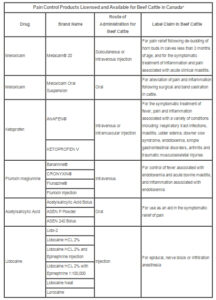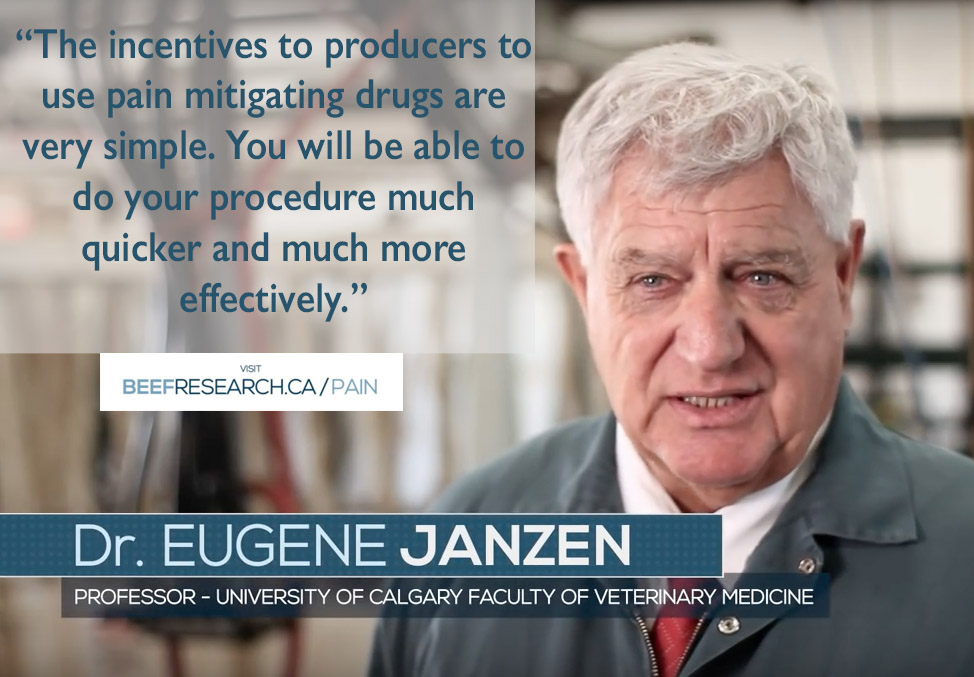Pain Control Gaining Priority Among Beef Producers
For Saskatchewan beef producers Tamara and Russ Carter administering a pain control product to calves prior to branding and castration procedures was just the right thing to do.

Over the past three calving seasons the Carters, who ranch near Lacadena in southwest Saskatchewan, have been treating spring calves with an injection of Metacam just prior to processing. The product from Boehringer Ingelheim has been on the market for several years. It was developed as an anti-inflammatory and pain relief product, quite commonly used in treating companion animals, but in the last few years it has gained traction for use in treating livestock, as well.
The 1 ½ millilitre dose for young calves appears to considerably reduce the post-processing discomfort level of calves, says Tamara and while they have no formal research trials to confirm observations, they also believe calves have improved weight gain performance right through to weaning.
“It does make a difference in the comfort level of the calves,” says Carter. They were first pointed toward the pain control product during a discussion with their herd veterinarian, Dr. Glen Griffin of Southwest Animal Health Clinic. It was partway through the 2013 calving season and some of the calves had already been processed.
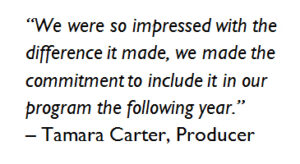
“But we learned Metacam was suitable for pain control and we wanted to give it a try on the rest of the calves,” she says. “We were so impressed with the difference it made, we made the commitment to include it in our program the following year. Calves that received pain control treatment with Metacam hopped up much faster after being processed, they paired up with their mothers sooner and returned to nursing and eating sooner. In the 48 hours following processing, the calves treated with Metacam were noticeably more comfortable and spent less time laying around.” As well, Carter says there were no secondary infections of any scrotums, which occasionally needed to be treated in the past.
Calves treated in batches
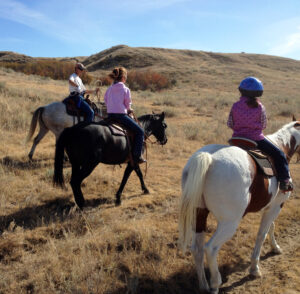
The Carters run a mixed farming operation near the South Saskatchewan River about half way between Swift Current and Kindersley. They crop about 3,800 acres and run a 300 head cowherd of straight Black Angus cattle. The Carters, along with their three children, manage all the spring processing that includes branding, castration and vaccination. Calves are processed in smaller batches of 30 to 40 head at a time usually between two to three weeks of age. The Metacam dose is delivered to each calf in a subcutaneous neck injection as they are lined up in a holding queue just before reaching the processing table. It is fast and easy to administer.
“We found it much simpler to process these smaller groups ourselves during the calving season, rather than wait until the end and do everything in a day or on a weekend,” says Carter. “Once we have a group of about 30 that are two or three weeks old, we will process them. Working with smaller groups of calves allows us to keep detailed records and ensure that every calf gets the appropriate doses of vaccines and that none are missed.”
Carter says while treated calves were visibly more alert and brighter in the hours and days immediately following processing, they have also observed improved weaning weights in the past three years, which she credits at least in part, to easing calves through processing treatments.
Overall improved performance
With a portion of the steer calves treated with Metacam in 2013, average weaning weights that year were 509 pounds. With all steer calves treated in 2014 weaning weights averaged 530 pounds and again in 2015 treated steers calves averaged 576 pounds at weaning.
Carter says they have examined each season to look at factors, which may have influenced higher weaning weights. Particularly in 2014 and 2015 with calves 21 and 67 pounds heavier, respectively, compared to 2013, the pain control treatment appears to at least be part of the weight gain improvement.
“In 2014 we had not changed anything else from 2013,” says Carter. “The bull battery had stayed fairly consistent, the ratio of heifers to cows was the same, the calving start date and weaning dates were all the same. But, again we noticed that calves were up faster with the pain control, seemed less stressed, more comfortable and headed off with mom right away. They nursed right away and we noticed less laying around.”
In 2015, which started out as a dryer growing season, they sold 35 cow-calf pairs in the spring and put the rest out to pasture. “That fall we sold 120 calves with an average weaning weight of 576 lbs.,” she says. “That 67 lb. increase compared to the first year is very significant to us.”
Carter says they are not crediting the full weaning weight improvement to the Metacam treatment, but believe it helped.
“While our findings are very interesting to us, they are not scientific,” she says. “We have not accounted for things such as tracking calf sires to see if different bulls are breeding more of the cows to produce more offspring with larger birth weights, and therefore possibly higher weaning rates. We also have not accounted for any weather differences or environmental factors from year to year.” Some other producers, after the dryer 2015 growing season, claimed the shorter, more nutrient dense grass increased their weaning weights as well.
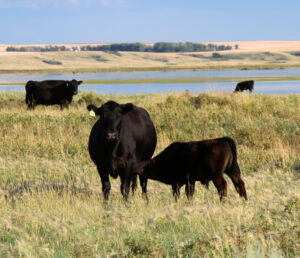
“With the exception of 2013, where we administered Metacam to part of the herd, we have not kept a control group to compare results of calves that did not receive pain control,” says Carter. “What we have found, is that the calves seem much more comfortable and less stressed with the pain control. They are up much sooner nursing and travelling with their mothers.”
“That reduced stress appears to remain with them throughout the next five to six months, and it seems that they grow faster and gain better as a result. Their immune systems are stronger. None have required treatment for castration-related infections following branding since we started to administer Metacam. All of our other vaccine program and mineral program has remained the same throughout this period. They have all grazed the same pastures each year.”
Good management practice
“When we realized there was a product we could use to reduce pain in cattle during processing we wanted to give it a try,” says Carter. “We believe that it is the right thing to do to reduce their discomfort during an unpleasant experience and we feel that it greatly reduces their stress.”
She says unfortunately the pain control product isn’t cheap. A 100 ml bottle costs about $250, which works out to about $3.75 to $5 per dose. “It is another cost that starts to add up if you are also vaccinating or using implants. Hopefully some day the cost comes down or we begin to see lower cost generic products on the market. The important thing to us, however, is that it does reduce the discomfort for these calves and it provides us with peace of mind that we are doing everything possible to make our animals comfortable and they are being raised humanely.” As part of their commitment to providing quality care to their animals, Carters have completed the Verified Beef Production program offered through the Canadian Cattlemen’s Association, which also promotes proper livestock care, on-farm food safety and sustainable practices.
“We can’t definitively prove that the pain control has created the improved growth, but we are convinced that it is a contributing factor. It is rewarding to us as producers to know that our decision to provide pain control at castration appears to help their overall health.”
Dr. Eugene Janzen, professor of production animal health at the University of Calgary school of veterinary medicine says the Carters are part of what appears to be a growing trend across the livestock industry to improve the proper care and treatment of livestock.
“We are starting to see more interest in using these pain control products in all sectors of the industry,” says Janzen. “Particularly among the young people, in 4-H for example, they want to know what is available and what measures they can use to improve the comfort of their cattle. And that concern is reflected on their parents as they want the farm to use pain control products as well.
“But I am seeing interest in pain control measures at the producer level, and in the feed yards, as well,” he says. “I believe for a long time these operators have said “we understand that this procedure is causing discomfort, but what do we do?” We are beginning to see these pain control products, such as Meloxicam or the brand name Metacam used more commonly by producers. It is what producers want to do in terms of improved production practices, but it is also what the consumer or society is looking for too.”
Janzen says there have been a number of studies and surveys that show 75 to 80 per cent of society view pain control in livestock as a priority. That interest is already driving some food processors, food retailers, and the food service industries to search out livestock production programs where pain control measures are applied.
And the products do work, says Janzen. While doses and administration times will vary with products, he says the effect of pain control treatment should persist for at least 24 hours — perhaps longer.
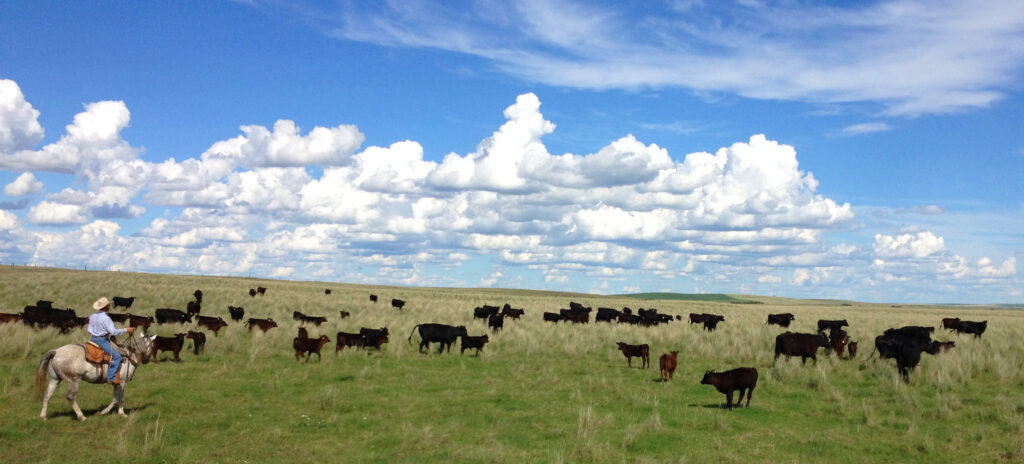
“We’ve seen in research as well as from on-farm experience that calves that are treated are up and moving around sooner, they have less lethargy, they are back with their mothers and nursing sooner and able to travel sooner, so it does get them over the impact of processing much sooner.”
Janzen says he expects to see ongoing adoption by the industry of use of pain control products. “Sometimes when I am speaking to producers about pain control measures I feel like a pied piper,” says Janzen. “I don’t have to convince them that this is a good practice. They just want to know what they can use and how to use it.”
He says going forward there is ongoing research in how to better measure pain in livestock, and there is also a need for pain control products that are effective, long acting but also with short withdrawal times, low cost, easy to administer, and able to show a return on investment.
“This is something that both the industry and society wants,” says Janzen.
More producer testimonials
Always have pain control product @BeefResearch @HerbertLTracy within reach for treatments of calves. #ranchlife pic.twitter.com/4TWCT82rqg
— Tim Oleksyn (@SouthRanchTim) April 15, 2016
@SouthRanchTim @AlbertaBeefQual @BeefResearch @HerbertLTracy it’s something we added to our vet box now too! — Lonesome Dove Ranch (@tara_m_davidson) April 15, 2016
Started using oral meloxicam and it makes a world of difference for the calves #ranchlife #animalcare https://t.co/HWMleK9J2u
— craig cameron (@cwcfarmboy) April 14, 2016
Click here to subscribe to the BCRC Blog and receive email notifications when new content is posted.
The sharing or reprinting of BCRC Blog articles is welcome and encouraged. Please provide acknowledgement to the Beef Cattle Research Council, list the website address, www.BeefResearch.ca, and let us know you chose to share the article by emailing us at info@beefresearch.ca.
We welcome your questions, comments and suggestions. Contact us directly or generate public discussion by posting your thoughts below.
